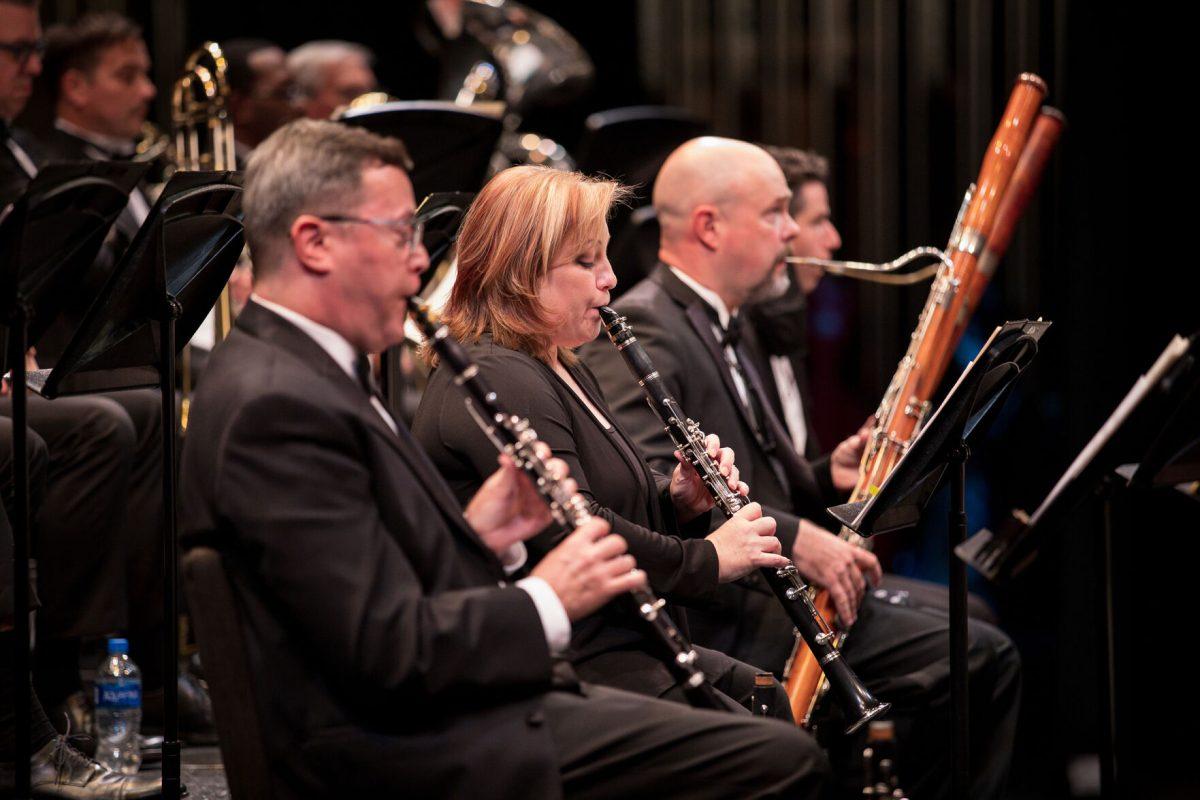Serenity, beauty and an ode to loved ones: the three key ingredients to the classic, multi-movement serenade piece.
On Sunday, Nov. 14, the Brazos Valley Symphony Orchestra, or BVSO, performed its “Wind Serenade” concert, featuring a select group of winds in Rudder Theatre. Directed by Marcelo Bussiki, these three selections brought a calm — serene, even — environment to local audiences.
Though some audiences may be familiar with the work of Mozart, Dvoák and Strauss, concert-goers had the opportunity to arrive early for a talk, hosted by Ann Thompson, on the history of the composers and their music. Since the repertoire performed by BVSO is often hundreds of years old, these built-in lessons create an accessible and enjoyable experience for all.
This concert — the second in the 40th year of the BVSO — was led by the wind instruments: flutes, clarinets, oboes, bassoons and French horns. The stars of this concert, however, were the principal clarinetist and oboist, Jill Stewart and Rebecca Fairweather-Haskins, respectively.
The ensemble jumped right into the heart of the concert, with the full eight movements of Mozart’s “Serenade No. 10, K. 361/K370a ‘Gran Partita’ in B Flat Major.” This piece is nearly an hour long, but the density was nonetheless greatly appreciated by audience members who had gone over a year without the local symphony orchestra.
For those unfamiliar with the serenade, this Mozart piece is truly a paragon of the format, balancing the reservation and hesitation of love through the clarinet with the excitement and conversation of a new relationship as the clarinet and oboe engage in a dialogue of sorts, responding in kind to each of the woodwind phrases.
However, due to the immense length, this piece is not for the impatient or new orchestra fans, as the eight movements, without break, can be confusing to dissect and differentiate.
On the other hand, “Serenade in E Flat Major, Op. 7” by Strauss, clocking in at just under 10 minutes, is a fabulous introduction to the serenade. Much of the simplicity of this piece is due to the inspiration it draws from Mozart, as well as Mendelssohn — another prolific composer.
The gentle horn and sweeping motion throughout allowed for a culmination of a more dramatic sound, contrasting with the initially light and gentle piece.
Finally, Dvoák’s “Serenade for Wind Instruments, Op. 44 in D Minor” rounded out the concert, bringing in an additional voice of the cello, which served as an echo for the bassoon features, played by Eric Stone Miller. Alongside a featured cellist, Miller was able to both synchronize their deeper instrumental voices as well as create a back-and-forth dialogue, creating a deeper, more dramatic sound for the middle movements.
Overall, the concert was a warm welcome back to the world of symphony orchestra, due not only to the expected talent of performers, but also the choice to make the repertoire a true ode to the Brazos Valley community, which continually supports the ensemble. For audiences hoping to join the future, BVSO’s 40th season will resume with its annual “Holiday Pops” concert on Dec. 12.
Criticism: Tuning into true classics
November 16, 2021
0
Donate to The Battalion
$2065
$5000
Contributed
Our Goal
Your donation will support the student journalists of Texas A&M University - College Station. Your contribution will allow us to purchase equipment and cover our annual website hosting costs, in addition to paying freelance staffers for their work, travel costs for coverage and more!










